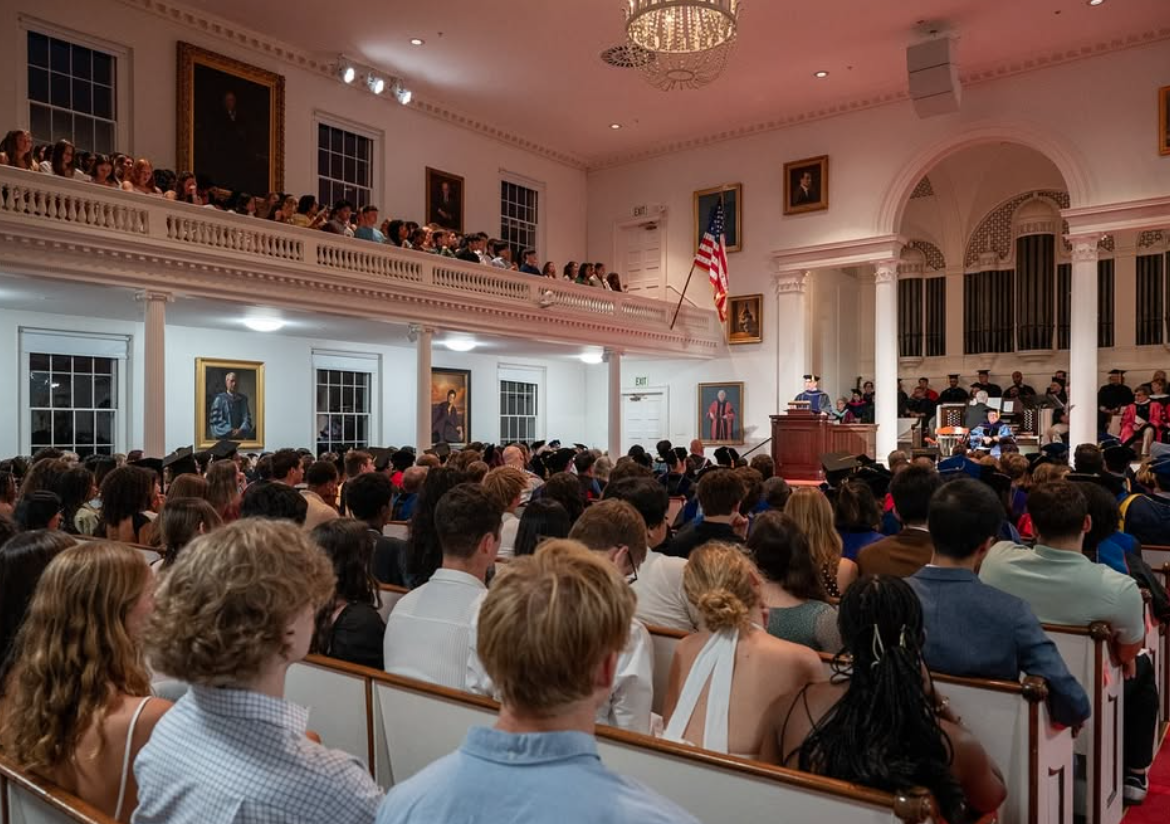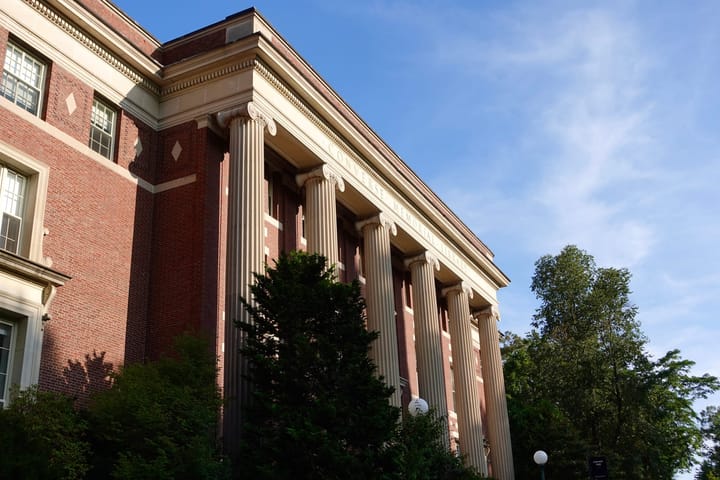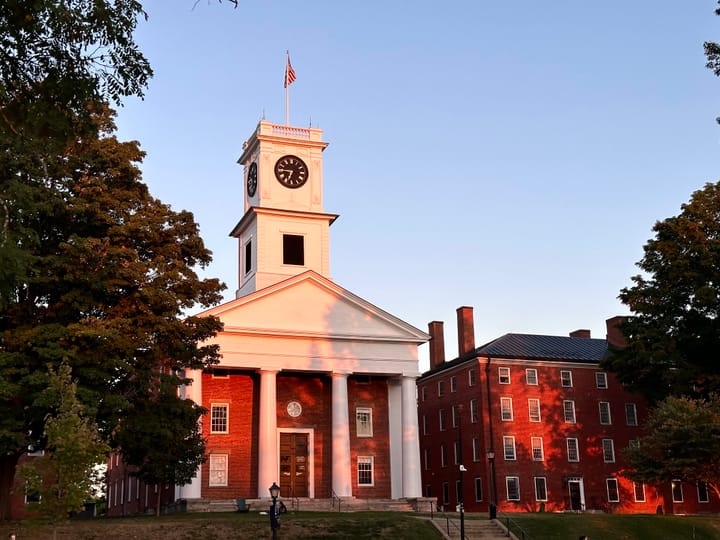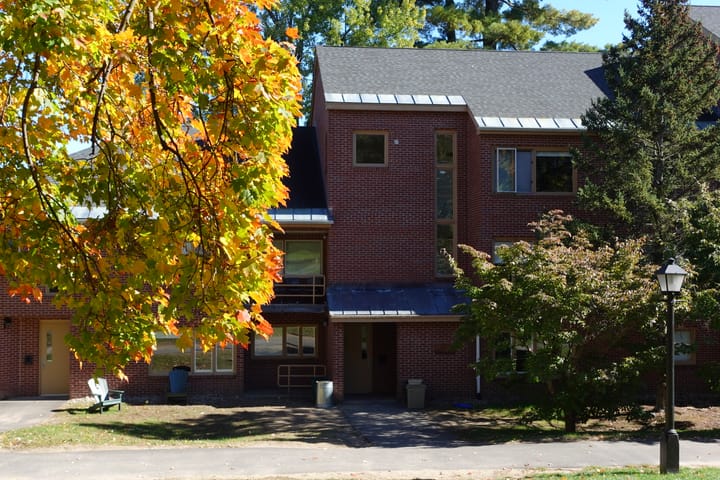Amherst Rural Student Enrollment Skyrockets
The Class of 2029’s rural student enrollment increased by 37% after the college joined an intercollegiate recruitment network. Managing Features Editor Talia Ehrenberg ’28 and Staff Writer Sofia Angarita ’26 investigated the college’s strategy for improving rural student recruitment.

Since sending out acceptance notifications on March 21, Amherst College has incrementally released new information about the class of 2029. On March 22, Amherst announced that 96 students admitted into the class of 2029 are from “rural regions,” a 37% increase from the previous year. Rural students’ yield to Amherst additionally increased by 200%. The recent increase in rural student admissions and attendance coincides with Amherst’s inaugural year of involvement in the Small Towns and Rural Students (STARS) Network and the onset of two new initiatives: Amherst Small Town and Rural Overnight (ASTRO and the Rural Student Ambassador (RSA) Program.
The past admissions cycle marks the first year of the college’s participation in the STARS College Network — a coalition of 32 U.S. colleges and universities dedicated to “Building bridges between rural students and higher education opportunities,” funded by a $20 million gift by Trott Family Philanthropies. Amherst was invited to join the second cohort of STARS schools on a written commitment to prioritize rural and small-town students in admissions. The STARS Networks encourages three main initiatives for rural student admission: Fly-in opportunities to bring prospective students to campuses, recruitment through admissions staff traveling around the country for recruitment, and virtual programming.
Further, the Admissions Office sends representatives around the country, sometimes on trips organized by the STARS network. Assistant Dean of Admissions Nathan Grove ’23 explained, “We typically do two trips in the fall [and] two trips in the spring [with the STARS network]. I will go on one of those trips, and then one of my colleagues from the admissions office will go on another one.” On a STARS-organized trip to a rural area, around 15 to 20 of the STARS schools present on aspects of the college application process, like early decision applications and financial aid packages, before breaking out into a typical college fair. Through collaboration with STARS, Amherst’s relatively small admissions team can afford to travel to rural parts of the country to meet with prospective students.
This September, Amherst College confirmed that 11% of the class of 2029 have home addresses in rural regions. Such statistics raise the question: What does the school consider to be “rural”? The Student spoke to Grove to find out what defines a rural student.
Grove explained that STARS uses the National Center for Education Statistics’ data to determine whether a locality is considered a rural or small town. Grove added that any community larger than 35,000 people is categorized as a city, while anything less than that is a town. The rurality of a town is determined by its proximity to urban centers. While there is a quantitative definition, Grove affirmed that qualitative, lived experience is much more important from an admissions standpoint.
Grove oversees rural student initiatives such as ASTRO and the RSA program, along with the counselor fly-in, rural outreach trips, and virtual programming. ASTRO launched this fall, and welcomed prospective students from around the country to attend 24 hours of programming on September 26 before joining the larger Access to Amherst (A2A). ASTRO is Amherst’s newest fly-in opportunity aimed at rural students. Rural Student Ambassador Litzy Castañeda ’28 reflected, “I was so excited to see Amherst launch ASTRO for the first time because it provided something unique for rural students that I wish I had experienced myself when I was applying.” Intentionally considering what message could speak to the diverse array of experiences held by ASTRO participants at the program’s opening talk, Grove chose to discuss how students can talk to their stakeholders about the value of the liberal arts specifically as a return on investment: “if this is what you want, how to get [the people who care about you] on board.”
Grove, who is from “a really tiny town in western New York,” added that “for students who have very limited experience visiting college campuses, which is most rural students, claiming the space as your own … can be challenging.” ASTRO programming, like the across-town scavenger hunt, aims to help students feel like they belong on campus by rewarding venturing inside buildings and grabbing student signatures, “giving them that sense of familiarity with … Amherst[’s] uniqueness as a small town,” Grove said.

RSA, also new, provides four Amherst College students as points of contact for rural prospective students. Rural Student Ambassadors Castañeda and Kara Lewis ’27 spoke to their experiences in the program. “As a Rural Student Ambassador, I connect with prospective and admitted students from rural backgrounds. I share my own experiences, answer questions, and provide a perspective that students might not otherwise hear during the admissions process,” Castañeda said. “My role is really about making rural students feel seen, supported, and reassured that Amherst can be a place where they belong.”
In this position, she gets to connect with students who remind her of her own journey to Amherst and the obstacles along the way. “It feels like I’ve come full circle, going from being the nervous student looking for answers to now being the one who can provide them,” she added. “I can’t put into words how impactful it’s been to see on a student’s face that you’ve introduced them to a future reality that they didn’t think was possible,” Lewis said. RSA and ASTRO – both front-facing initiatives– aim to eliminate the obstacles that rural students face when applying to places like Amherst.
Grove remembered college and other post secondary representatives visiting his high school. These options consisted of the public school in the town, the private school in the town, all five branches of the military, and Yale. Grove explained that the person from Yale, who grew up in a nearby town, told him about QuestBridge, “which no one at my school had ever heard of before.” Grove said he wanted to be the person who shared that kind of information, because “it made such a difference in what I thought of as possible” and could allow him to “open that door to possibilities that [students] didn't even really consider to be out there,” Grove said.
In Castañeda’s hometown, information about college financial aid and the application process was limited; students were primarily encouraged to apply to in-state colleges and universities. Lewis, who grew up on the lower Eastern Shore of Maryland, said that few resources were available for those who wanted to attend higher education at her Title I high school. “The school was underserved and the guidance counselors overworked … So I had to learn what opportunities were available to me on my own,” she said.
As one of three STARS liberal arts colleges — along with Colby and Spelman — Amherst has a special interest in recruiting rural students. Grove explained that while many big state universities have specific missions “to increase rural recruitment in their state,” Amherst aims to maximize geographic diversity from across the world. Additionally, Amherst’s remote location and its small class sizes are often particularly appealing to rural students. “[Rural students are] used to being in [small] classes where they have discussions,” Grove said. While some rural students do want to go to a large school in a big city, for others, Amherst’s 1900 students is the perfect size.
Dean of Admission and Financial Aid Matthew McGann explained: “It doesn’t make as much sense from a purely financial perspective … to go to places where you might only meet with one or two students … a network of 30 schools working together allows for more contact, more opportunities for it to make sense to invest the time and the money into doing outreach with these students … The power of all these schools working together makes it more worthwhile for students and families to make the trip [to STARS’ fairs and information sessions] from wherever they might be.”
Grove attributed the drastic increase in yield substantially to the outreach of RSAs, but also noted that admitting more rural students aligns well with the college’s emphasis on holistic admissions. “The whole point of doing the admissions process and reading holistically is that we care about everything about a person and and where you’re from, regardless of where that is, is a really big part of that,” Grove said.
This dedication sets Amherst apart from other institutions. “There are some who think that college admission should just be done by test scores, and I think that our community and our conversations would be less rich if we didn’t have a holistic admission process,” McGann said. “In this moment where there are a lot of questions about higher ed[ucation]’s commitment to a diversity of opinions on campus, I hope this is one additional way that people can see that Amherst today, and for a long time, is committed to to this diversity of ideas, diversity of backgrounds and perspectives, and I think it’s what makes places like Amherst great and really valuable to our country.”
Amherst community members plan to continue expanding the rural student initiatives in the future. “I hope Amherst continues to strengthen the program by increasing visibility, building mentorship opportunities, and creating more structured support for rural students once they arrive on campus. It’s not just about recruiting rural students, it’s about making sure they thrive here along with everyone else regardless of their background,” Castañeda said.
Lewis said the Rural Student Ambassadors are also planning to create a registered student organization (RSO) for small-town and rural students on campus. “For students from smaller areas where barely anyone goes to schools like Amherst, there is so much general, practical ‘college knowledge’ that it seems like everyone else already knows. So, we’re starting an RSO to build community and help students from small towns and rural areas transition to college life at Amherst.”
McGann added, “The traditional methods of recruitment and outreach won’t be where we stop … In the end, I think an important thing is [for] the students [to know] that they have different kinds of options … I think it’s good that students know that there are places like Amherst that care, where they’d be welcomed, where they would be a vital part of the community.”





Comments ()